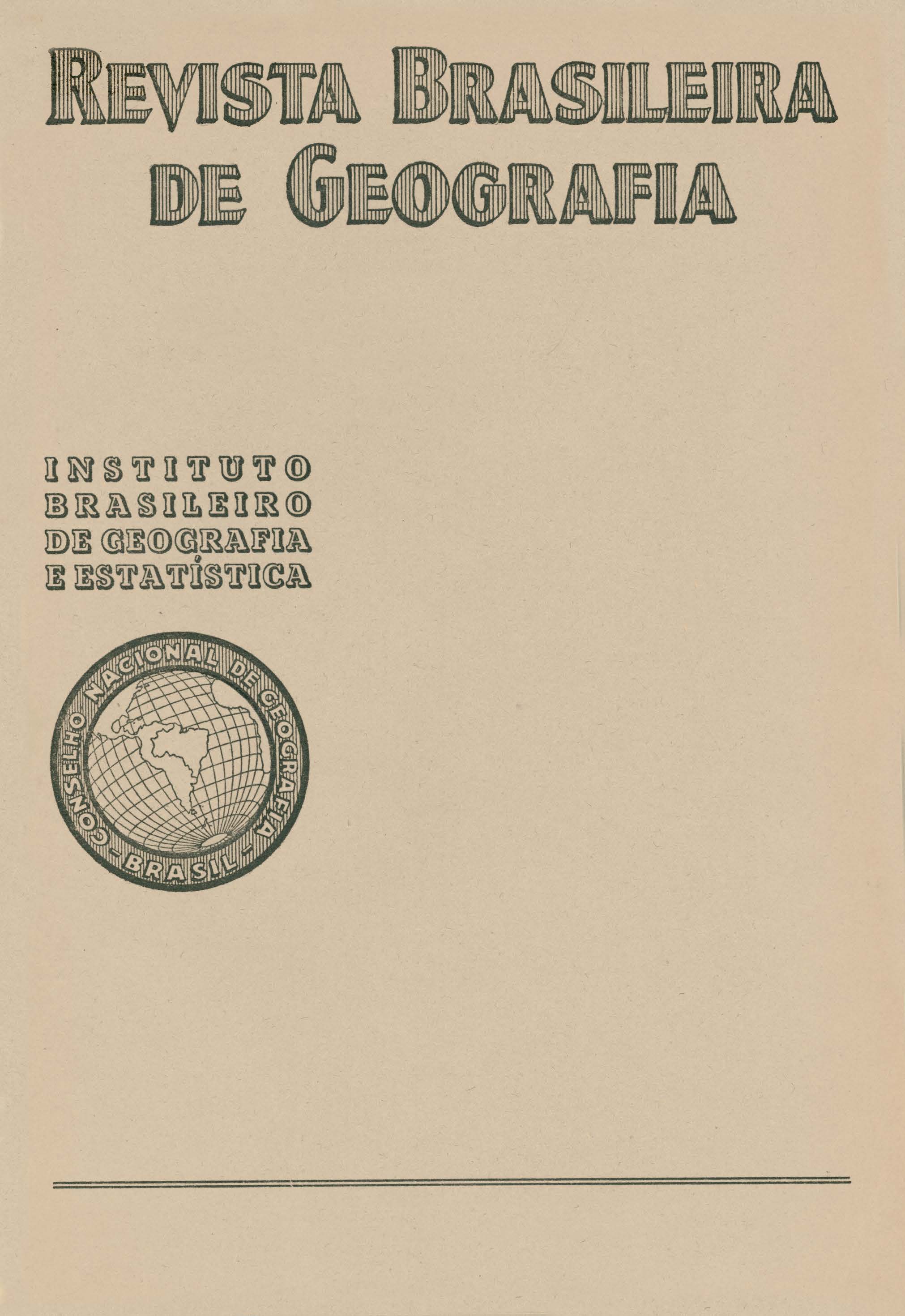Geografia dos transportes no Brasil - circulação
Palavras-chave:
Geografia econômica, Geografia física, Geografia humana, Transportes, ColonizaçãoResumo
Engineer Moacir Silva, Technical Adviser of the National Geographic Council, following the publication of his "Description of Transportation in Brazil" publishes in this issue the 5th. chapter, entitled "Primitive Internal Circulation"
Verifying the confusion existing between the expressions transportation and communication as well as ways and means of transportation, he defines what should be understood by circulation and economical masses and concludes: - transportation is the carrying of economical masses from one determined point to another determined point: - means of transportation is the natural means (sea, river, etc) or such constructed for the purpose (roads, canals, etc ): ways of transportation is the manner of carrying (animals, single vehicles and even man, etc ) system of transportation when, In addition to the existing vehicles there are indispensable complementary means (posts, stations, ports, etc.) or when the vehicles are specially and technically constructed for such purposes (railroads, suburban railways, etc): railroads system is the connection of ways to one center, and, finally, communication consist In the transmission of written matter, directly by word of mouth or through writing (postal correspondence, etc ) or in the transmission of sounds In general (telephone, radio, etc ) or In the transmission of pictures, silent or talked (television)
He prefers the classification of ways and means of transportation In two large groups: A:-Ground transportation (road or rail), executed on land or on specially prepared or artificial ways, and, B: - Navigation (maritime, fluvial or lake - and by air), utilizing dynamic means (water and air) and the natural ways (sea, river, etc).
Relative to the territory, circulation can be: - internal (transportation on land and navigation in the Interior), peripheric (maritime navigation of cabotage) and aloft (aerial navigation).
Considering the evolution of transportation the author subdivides the Internal circulation in: - primitive circulation (ways and means of transportation in existence prior to the coming of the railroads) and actual internal circulation.
Recapitulating what he stated in the chapter of his publication relative to ancient ways, which originated in the coastalcenters and which branched out to the interior, he sets out the principal cartways which took the place of the ancient ways until the advent of the railroads. The roads of the Guaianazes and Goitacazes, treated by the first who penetrated into the Interior, the first one, crossing the Serra do Mar, connects Piratininga and Paratí, and the other orossing the Mantiqueira montains; the road of Perequê, of Padre José, or of the Mar and the road Novo para Minas, notable for their administrative and economical value.
He also refers to the road of the Comercio, already used in 1822 and which connects the village of iguassú to the margin of the Paraíba and points out the important advancement gained by the wad União e Indústria, the "first Brazilian roadway", started in 1856 and definttely inaugurated in 1861, covering a distance of 144 kilometers and connecting Petrópolis to Juiz de Fora Several important works of stone with steel reinforcements, with six meters width, supporting walls, ditches paved with granite and the surface of the road made of stone justifies the title given to this road of "pioneer".
From the historic-geographical point of view he in syntesis states the primitive internal circulation. A) The South of the country, where during the period of the opening of roadways, stands foremost the Road Caminho do Mar and the golden period of the cartways when the action of the then Province of Rio de Janeiro stands out during the years 1840 to 1864 with the building of the wads Presidente Pedreira, the Presidente,Mangaratiba to S.João Marcos, the União e Indústria and the regular road o f Serra da Estrela which connects Petrópolis to the coast and other roads of minor importance; the decaying period at the and of the XIX century in which there were only two exceptions: the roads of Graciosa and Dona Francisca. The principal economical factors that affected this were the mineral wealth of Minas country and the Coffee planting in the State of Rio de Janeiro, Minas and São Paulo B) Iu the North of the country, northward of Baia (Baia, Pernambuco and Ma1anhão) due, principally, to the cotton growing and cattle raising and as well as the mining activities assisted the connection between Baía and Minas
According to the 1egions, he thus distributes the means of primitive transportation: In the hilly districts of Minas, São Paulo and other States: the ox cart, the mule pack and horses: In the hilly parts of the south, the horse and, in the mountainous regions the waggon drawn by 4 or 5 horses: In the higher regions In the interior (Goiaz and Mato Grosso), the mule the ox cart and as a mount the horse and the ox In the rivers the paddle canoes and In the Iarger rivets sometimes the sailing canoe On the sea border small rafts were used, as well as large barges, all with sail
In the transportation of passengers and merchandise he calls attention to the part played by the ox cart and the mule packs Women and children travelled in litters, being only proper of large cities the use of coach The voyages In ox cart were divided in two parts; at morning time one league was ran through and in the evening another The mule packs, with the same rest time crossed 4 or 5 leagues a day When the road União e Indústria was inaugurated the Imperial coach ran from Juiz de Fora to Petrópolis in 10 hours and 33 minutes, what means: 1 kilometer in 4m, 23s






